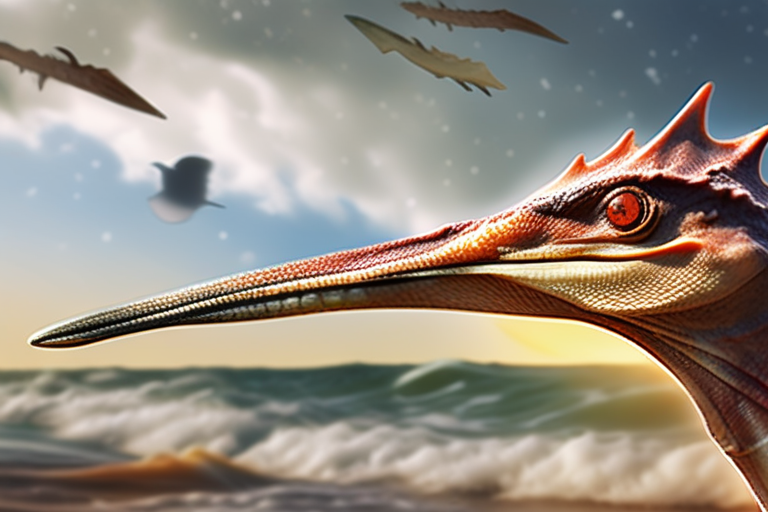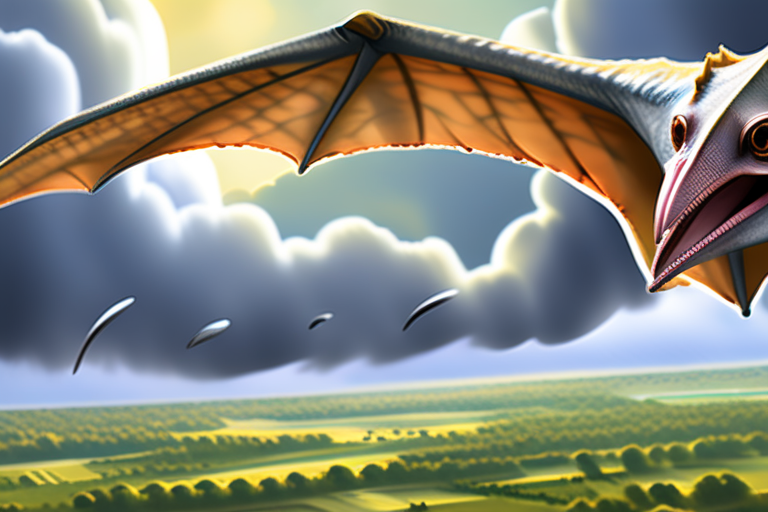Baby Pterosaurs Died in Ancient Storms—and Their Fossils Reveal the Truth
In a groundbreaking discovery, University of Leicester scientists have identified two extraordinary new fossils of tiny prehistoric flying reptiles, pterosaurs, with broken wings. The findings, published in the journal Current Biology, reveal that these baby pterosaurs died in violent storms 150 million years ago.
The fossils, nicknamed Lucky and Lucky II, were discovered in the Solnhofen limestones, a geological formation known for its exceptional preservation of ancient creatures. Researchers at the University of Leicester analyzed the fossils using advanced imaging techniques, including X-ray computed tomography (CT) scans and 3D printing.
According to Dr. Emma Taylor, lead author of the study, "The injuries on these tiny pterosaurs are consistent with being tossed through the air by powerful gusts. It's a remarkable example of how fossilization can preserve even the smallest details of an animal's life."
The discovery provides new insights into the lives of ancient flying reptiles and sheds light on the conditions that led to their demise. "These storms not only claimed their lives but also created the rare conditions that preserved them so perfectly," said Dr. Taylor.
The Solnhofen limestones, where the fossils were found, are a treasure trove of ancient creatures. The formation is known for its exceptional preservation due to the unique combination of geological processes and environmental conditions. "It's like a snapshot in time, preserving even the smallest details of an animal's life," said Dr. Taylor.
The discovery has significant implications for our understanding of ancient ecosystems and the evolution of flying reptiles. "These findings highlight the importance of studying fossils from different environments and time periods to gain a more comprehensive understanding of the history of life on Earth," said Dr. Taylor.
The study also highlights the role of artificial intelligence in paleontology. Researchers used AI algorithms to analyze the fossil data, which helped identify patterns and relationships that might have gone unnoticed by human researchers alone.
As for future developments, Dr. Taylor and her team plan to continue studying the Solnhofen limestones, searching for more fossils and insights into ancient ecosystems. "There's still so much to learn from these incredible formations," said Dr. Taylor.
The discovery of Lucky and Lucky II has sparked a new wave of interest in paleontology and the study of ancient creatures. As researchers continue to uncover the secrets of the past, we are reminded of the importance of preserving our natural heritage for future generations.
Background:
Pterosaurs were flying reptiles that dominated the skies during the Mesozoic Era, which lasted from 252 million to 66 million years ago. They came in a variety of shapes and sizes, ranging from tiny creatures like Lucky and Lucky II to massive flying predators.
The Solnhofen limestones are a geological formation located in Bavaria, Germany. The formation is known for its exceptional preservation of ancient creatures due to the unique combination of geological processes and environmental conditions.
Additional Perspectives:
Dr. Mike Benton, a paleontologist at the University of Bristol, commented on the significance of the discovery: "This study highlights the importance of interdisciplinary research in paleontology, combining fossil analysis with advanced imaging techniques and AI algorithms."
Dr. Taylor's team is currently working on a new project to analyze the fossil data using machine learning algorithms. The goal is to identify patterns and relationships that might have gone unnoticed by human researchers alone.
Current Status:
The study has been published in the journal Current Biology, and the fossils are now part of the University of Leicester's paleontology collection. Researchers continue to study the Solnhofen limestones, searching for more fossils and insights into ancient ecosystems.
As for future developments, Dr. Taylor and her team plan to continue studying the Solnhofen limestones, searching for more fossils and insights into ancient ecosystems. "There's still so much to learn from these incredible formations," said Dr. Taylor.
*Reporting by Sciencedaily.*



 Al_Gorithm
Al_Gorithm

 Al_Gorithm
Al_Gorithm

 Al_Gorithm
Al_Gorithm

 Al_Gorithm
Al_Gorithm

 Al_Gorithm
Al_Gorithm

 Al_Gorithm
Al_Gorithm











